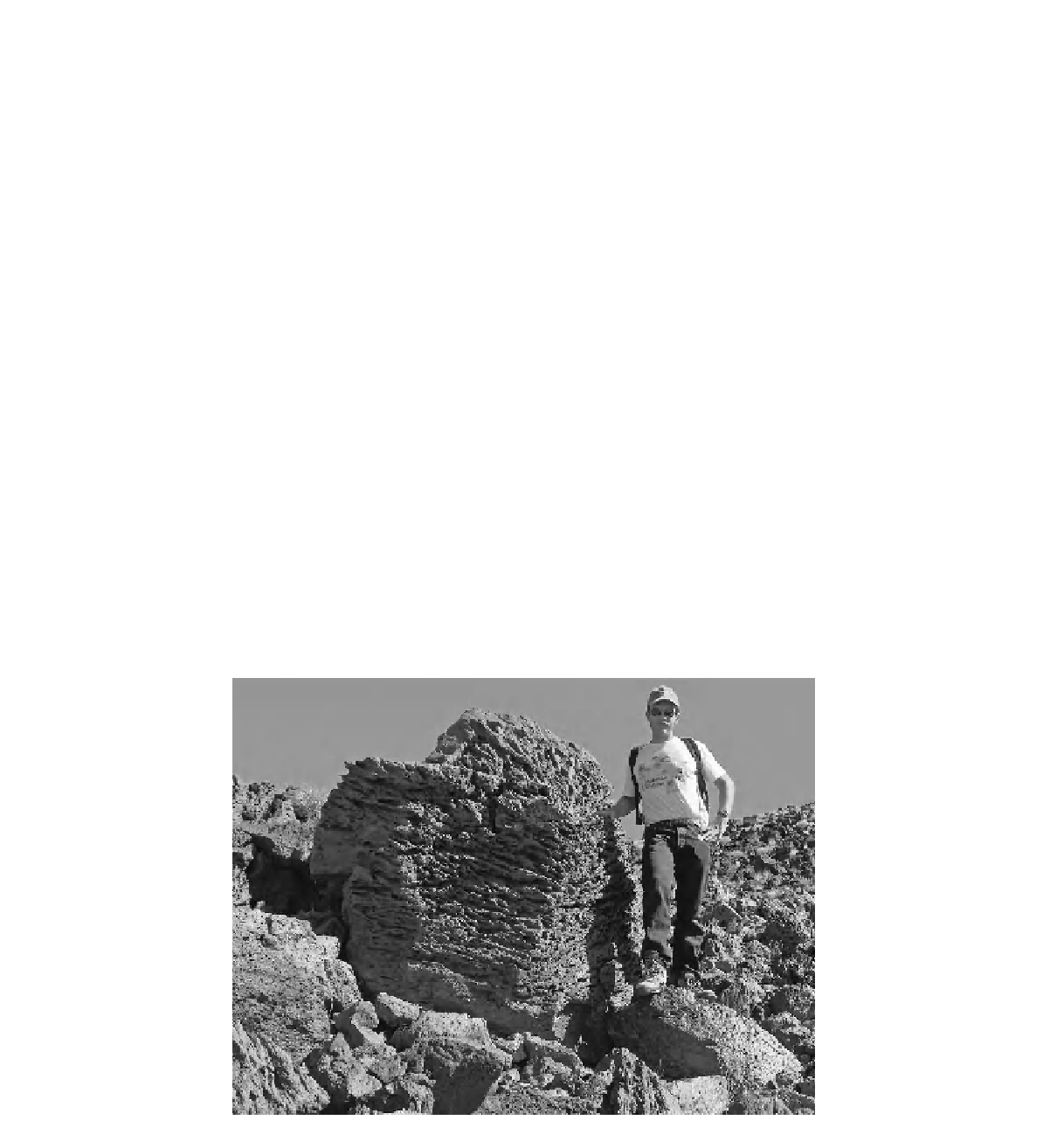Geoscience Reference
In-Depth Information
as face angle lowers, an interpretation that appears to be
supported by field observations.
Feature scale (length, width and depth) vary greatly on
ventifacts. Factors that affect scale include rock type and
size, particle velocity and the duration of abrasion. The
following observations may be made based on field study:
values and wind velocities are recorded when the near-
surface flow approaches approximately normal to the
topography. At the crest of dunes, McKenna Neuman,
Lancaster and Nickling (1997) recorded speed-up in-
creases (the mean velocity of the wind at height
z
above
the hill relative to the mean velocity at the same height
over a flat surface) ranging from 1.50 to 3.19, with a
corresponding increase in sediment flux of one to two
orders of magnitude. On a rocky hillslope, this means
that sand is most active near the crest and that more
sand is moved and at higher velocity (both greater par-
ticle velocity and an increased duration of time) than
lower down on the slope. In the Mojave Desert, for ex-
ample, many lower slopes are mantled with stable sand,
with active aeolian material present only near the crest.
Thus, from a historical perspective, ventifacts near the
crest will be abraded for a much longer time, often ex-
tending through climatic periods where the majority of
sand in a region is stabilised. Therefore, over time ven-
tifacts at the crest are subject to more sand, at higher
velocities and for longer time periods. It is difficult
to separate out the velocity or duration components in
considerations of feature scale.
a. Small rocks are associated with small features. For very
small rocks (a few cm in diameter), macroscale features
appear to be absent (Maxson, 1940) (Figure 21.10(b)).
Moreover, the larger the rock, the larger the features
that develop on it (Figure 21.18). During the process
of ventifact development, there is both recession of the
face of the rock and growth of the features. The rock
must be large enough to accommodate both.
b. If there is a large rock at the base of a hill and an
equally large rock at the top of a hill, then the rock at
the top will have the larger features (Laity, 1987). Why
is this? What accounts for scale increases in features at
the hilltop - an increase in wind and particle velocity,
an increase in the duration of abrasion, or a combina-
tion of these factors? The role of particle velocity and
abrasion duration are difficult to disentangle. As the
wind approaches a hill, the airstream compresses, re-
sulting in an acceleration of flow and an increase in ve-
locity and sediment transport. The largest shear-stress
c. Feature scale increases with height up an individual
boulder, with the fundamental geometric properties re-
maining the same. On a single boulder, the upper part
Figure 21.18
The scale of ventifact features increases with rock size. This massive basaltic ventifact is pitted on its high angle,
lower windward face. On the upper face and margins of the rock, flutes occur. This rock is located on a hillcrest in the Cady

